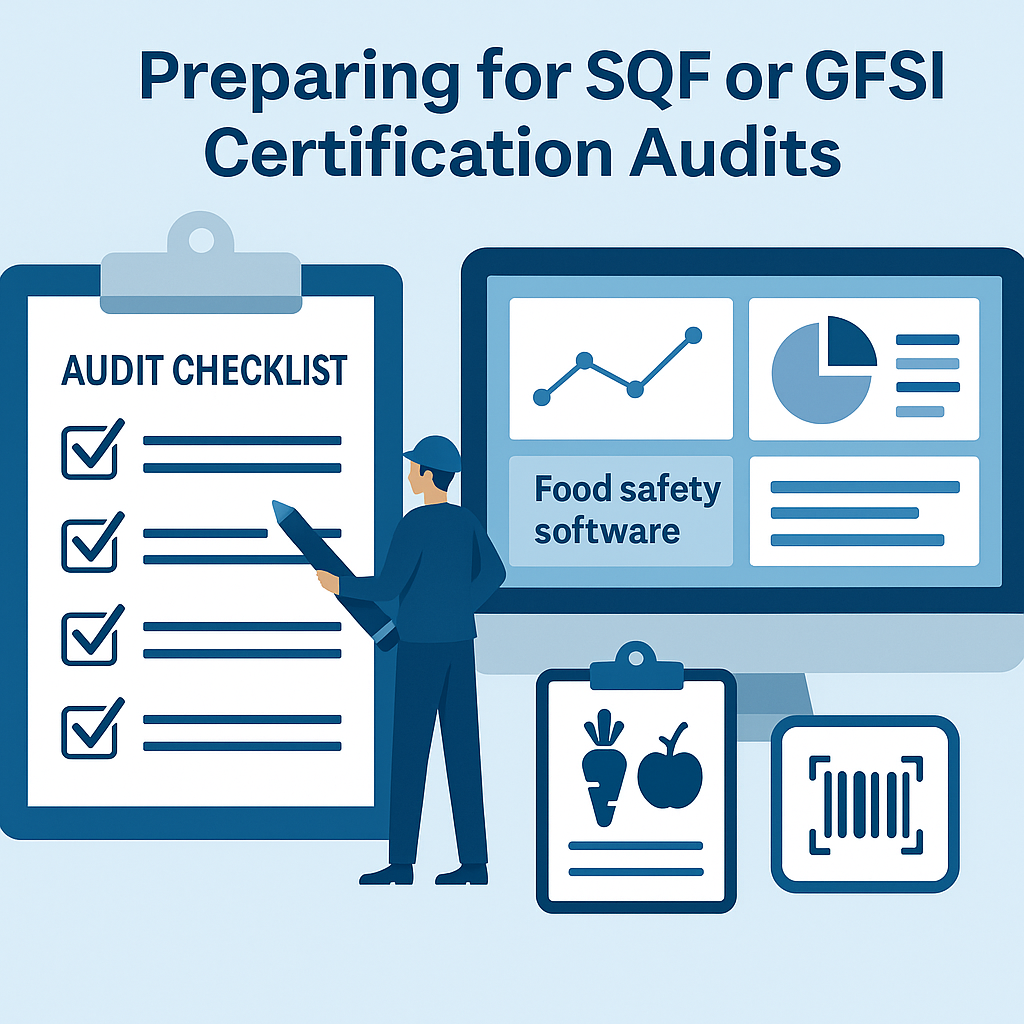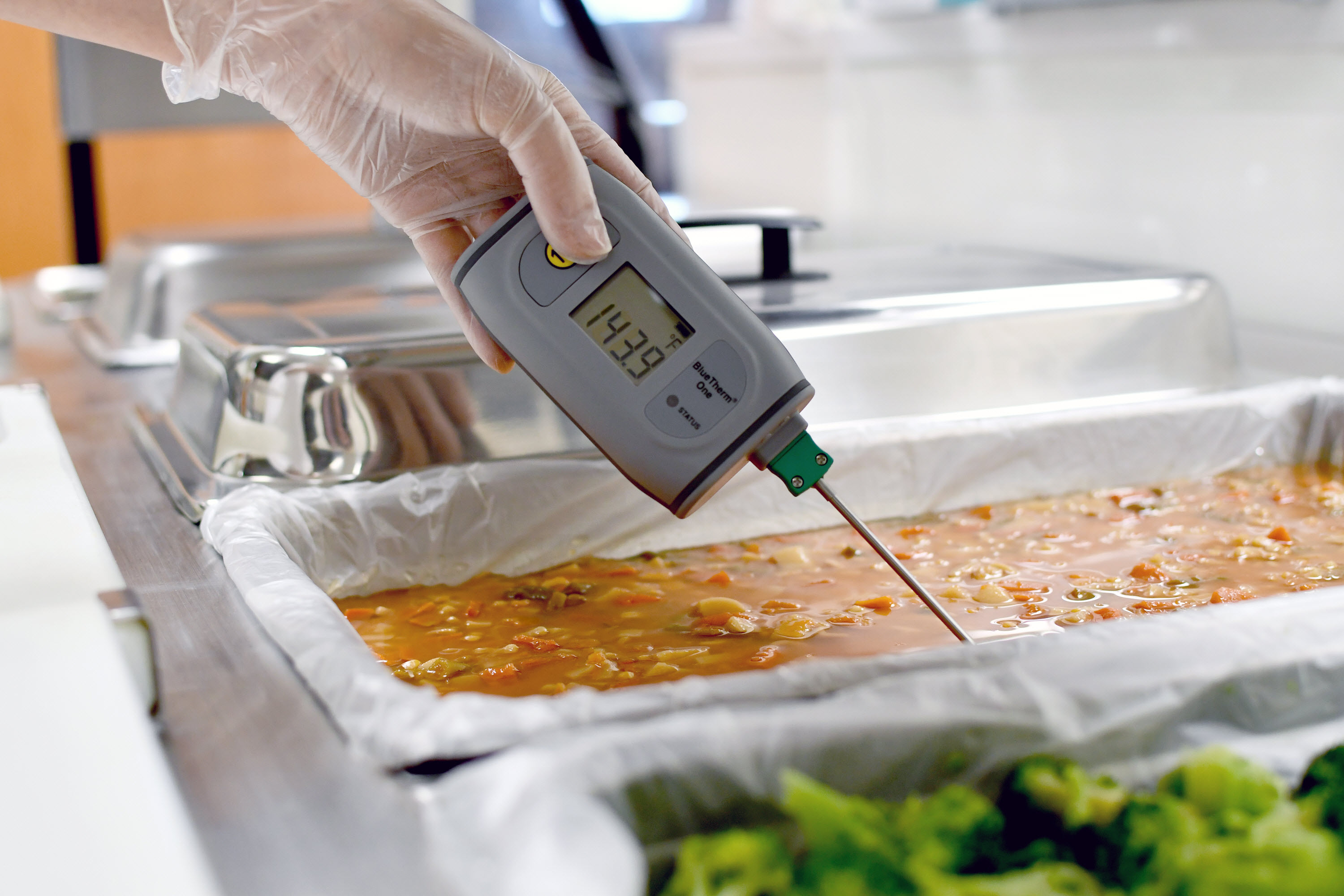Audit findings happen—even in mature programs. What separates high-performing organizations from the rest is not whether they get findings, but how fast and effectively they close them out. This guide cuts through the fluff and shows you, step by step, how to manage corrective actions in a way that satisfies auditors, protects consumers, and gives executives the visibility they need.
If you remember one thing: speed without rigor is useless; rigor without speed is risky. You need both.
What an Audit Finding Really Means
An audit finding is a gap between what should be happening and what is happening. That gap can be procedural, documentation-related, or performance-related (e.g., a CCP deviation or allergen control failure). Labels vary by scheme (SQF, BRCGS, FSSC 22000, internal GMP audits), but most identify:
-
Critical/Major: Direct impact or high likelihood of product safety/legality/quality being compromised.
-
Minor/Observation: Lower risk or isolated issues; still signals a weak point in your system.
Don’t rationalize findings away. If an auditor could see it in a four-hour site tour, a regulator or customer could see it too—usually when it’s least convenient.
Common Traps That Sink Corrective Actions
Let’s name the traps and avoid them:
-
Treating symptoms (“retrained the operator”) instead of causes (“procedure is ambiguous; UI forces the wrong default”).
-
Document last: implementing changes but forgetting to update SOPs, forms, and HACCP/PCP documents. If it’s not documented, it didn’t happen.
-
Open-ended actions with unclear owners or deadlines—these never close.
-
No effectiveness check: you “fix” it, but the problem returns in a month.
-
Scattered evidence: you can’t quickly produce proof during a surveillance audit.
-
Over-engineering: building complex controls for a low-risk, low-frequency issue, eating bandwidth you need for real risks.
The Step-by-Step Approach (Triage → Root Cause → Fix → Prove)
Use this sequence every time. Adjust timelines by risk; the outline below assumes a moderate/major nonconformance.
1) Contain the risk now (Day 0)
-
Objective: Stop potential harm while you investigate.
-
Actions: Hold affected lots, stop the line, segregate materials, add a temporary check, notify QA and plant leadership.
-
Evidence: Photos, hold logs, line stop records, inventory blocks.
2) Record the finding and classify severity (Day 0)
-
Objective: Ensure the issue enters your system with the right priority.
-
Actions: Log the finding; tag scheme (e.g., SQF 2.6.1), process area, product, and risk category (allergen, CCP, labeling).
-
Owner: Quality leader creates the CAPA record; plant manager co-signs on majors.
3) Build the evidence package (Day 0–1)
-
Objective: Capture the “as-found” state before it evaporates.
-
Content: Auditor notes, photos, relevant SOPs, training records, batch records, maintenance logs, CCP charts, deviations, sensor exports.
4) Assign clear ownership and RACI (Day 0–1)
-
Objective: One accountable owner. Full stop.
-
RACI:
-
Responsible: Process engineer or area supervisor
-
Accountable: QA manager
-
Consulted: Maintenance, Sanitation, Procurement, IT/OT
-
Informed: Plant manager, Regulatory/Customer (as needed)
-
-
Deadline: Set milestone dates now (investigation complete by Day 5; implementation by Day 15; effectiveness check by Day 45).
5) Do a rapid risk assessment (Day 1)
-
Objective: Decide how hard and fast to push.
-
Method: Severity × Likelihood matrix. If high/high, escalate to senior leadership and consider customer/regulatory notification protocols.
6) Root Cause Analysis that actually finds roots (Day 1–5)
-
Tools: 5 Whys + Ishikawa (People, Process, Equipment, Materials, Environment, Management).
-
Rules:
-
Evidence over opinion.
-
If your “root cause” is “human error,” keep going—why was error possible, probable, and undetected?
-
Test causal links with data (e.g., timestamp correlations, calibration drift, training dates, system logs).
-
Deliverable: A causal chain that would convince a skeptical auditor.
7) Define the corrective action(s) (Day 3–7)
-
Correction vs Corrective Action:
-
Correction: Immediate fix (rework/hold/relabeled product).
-
Corrective Action: System change to remove the cause.
-
-
Design principles:
-
Engineer out the hazard (poka-yoke), don’t just add another sign or training.
-
Prefer automation (e.g., scanner rejects wrong label, PLC interlocks) over manual checks, when justified by risk.
-
Add monitoring and alerts where failure would be high-impact.
-
8) Preventive action & change control (Day 7–10)
-
Objective: Stop similar issues elsewhere.
-
Actions: Extend the fix to sister lines, formats, or sites; update change control logs; assess for unintended consequences.
9) Update documents and HACCP/PCP (Day 7–12)
-
Objective: Align the paperwork with reality.
-
Actions: Revise SOPs/SSOPs, forms, work instructions, job aids, HACCP/PCP and hazard analyses, validation/verification procedures.
-
Evidence: Version histories, redlines, approvals.
10) Train and implement (Day 10–15)
-
Objective: Users can execute the new method consistently.
-
Actions: Tailored training (operators, maintenance, QA), sign-offs, competency checks.
-
Evidence: Attendance, quizzes/observations, updated job cards at point-of-use.
11) Verify and validate (Day 15–30)
-
Verify: Are you following the new process? (checklists, internal audits, spot checks)
-
Validate: Does it work? (capability studies, defect rate trending, swab results, CCP charts, sensor data)
-
Evidence: Before/after comparison with real numbers.
12) Effectiveness review and close (Day 30–60)
-
Objective: Confirm the risk is controlled and the issue is unlikely to recur.
-
Actions: Trend KPIs, check for recurrences, interview operators, confirm no downstream surprises.
-
Closeout: Document the review, attach trend charts, and mark the CAPA as closed—with management sign-off for majors.
Three Worked Examples
Example 1: Allergen Label Near-Miss
-
Finding: During label changeover, a minor quantity of Product A (contains milk) could have been labeled as Product B (no milk). No affected product shipped.
-
Root Cause:
-
Why? Operator loaded previous roll → Why? Similar SKU codes and packaging color → Why? Label picklist UI lists SKUs by internal code only → Why? No visual control/preview → Why? Legacy system never updated for allergen sort.
-
-
Corrective Actions:
-
Add UI preview and color thumbnail; sort picklist by allergen profile first.
-
Install barcode verification that cross-checks SKU vs. allergen profile; line stops on mismatch.
-
Changeover checklist requires QA verification with a scanned first-article.
-
Update SOP; retrain; add management walk audit weekly for 4 weeks.
-
-
Effectiveness: Zero mismatches across 120 changeovers; stop-the-line captured 2 test mis-scans (working as designed).
Example 2: Listeria spp. Positive in a Drain (RTE Area)
-
Finding: Environmental swab positive in Zone 3 drain adjacent to slicer.
-
Root Cause:
-
Why? Biofilm harbored in drain elbow → Why? Sanitation CIP flow insufficient → Why? No flow verification post-maintenance → Why? Preventive maintenance schedule extended; no validation after pipe replacement.
-
-
Corrective Actions:
-
Replace drain elbow; validate flow; add visual flow indicator and ATP check post-sanitation.
-
Reinforce hygienic zoning and hose discipline; introduce weekly vectoring (Zone 3→2→1).
-
Maintenance procedure updated: any disassembly triggers re-validation swabs.
-
-
Effectiveness: 8 weeks of negatives; ATP pass rate > 98%; slicer Zone 1 remains negative.
Example 3: Supplier CoA Protein Out of Spec
-
Finding: Routine receiving test shows protein below spec; CoA shows compliant.
-
Root Cause:
-
Why discrepancy? Supplier switched NIR calibration curve → Why? Their instrument vendor updated model; change not communicated → Why? No change notification clause in SLA; no incoming verification frequency defined for low-risk suppliers.
-
-
Corrective Actions:
-
Update supplier agreement: mandatory change notifications; round-robin proficiency tests quarterly.
-
Adjust incoming sampling plan; risk-based verification for top 10 materials.
-
Add a supplier scorecard; place supplier on conditional status until 3 consecutive lots meet spec.
-
-
Effectiveness: No further discrepancies; supplier score improves to “A” after two quarters.
What Executives Should Track (Metrics That Actually Matter)
If you’re a C-level leader, stop asking only “How many nonconformances?” and focus on control and velocity:
-
Time to Containment (hours): From finding to product/line control.
-
Time to Root Cause (days): Should trend down as your system matures.
-
CAPA Aging: % of open CAPAs by age buckets (≤30, 31–60, 61–90, >90 days).
-
Recurrence Rate: % of findings with a repeat within 6–12 months (by category).
-
Effectiveness Pass Rate: CAPAs that survive 30/60/90-day checks.
-
Training Effectiveness: Post-training observation scores (not just attendance).
-
Leading Indicators: Near-misses captured, internal audit closeout speed, first-pass yield at CCPs.
Executives don’t need to read every CAPA record. They need a dashboard that highlights risks, bottlenecks, and trend lines—weekly.
Where Food Safety Software Earns Its Keep
You can manage CAPAs in spreadsheets and shared drives until the day you can’t. Then it’s chaos. A modern food safety software platform streamlines the entire loop:
-
Centralized CAPA records with severity, product, site, and scheme tags.
-
Automated workflows: task assignments, reminders, escalation when deadlines slip.
-
Root cause templates (5 Whys, Fishbone) embedded in the record.
-
Document control with versioning and e-signatures; link SOPs and HACCP/PCP updates to the CAPA.
-
Evidence vault: attach photos, batch records, swab results, PLC/sensor exports.
-
IoT integration: pull CCP data (temps, metal detector rejects) automatically; auto-flag deviations.
-
Analytics: heat maps of findings by line/shift/material; recurrence analysis; CAPA aging.
-
Audit mode: one-click evidence packages for surveillance or customer audits.
-
Traceability tie-in: if you also run Food traceability software, you can instantly map any impacted lot and run a recall simulation while containment happens.
Bottom line: software doesn’t solve culture, but it kills excuses and makes good habits automatic.
Timelines That Work (and Hold Up in Audits)
Use these as defaults; tighten for high-risk issues.
-
Within 24 hours: Containment, entry in CAPA system, initial risk assessment.
-
Within 5 business days: Complete root cause analysis; submit action plan with owners and dates.
-
Within 15 business days: Implement corrective and preventive actions; update documents; conduct training.
-
By 30–45 days: Verification/validation data; interim effectiveness review.
-
By 60–90 days: Final effectiveness review and formal closeout.
If you can’t meet a milestone, document why, what interim controls mitigate risk, and the revised date. Auditors accept reality; they don’t accept silence.
Documentation Checklist (Print This)
-
Finding record with severity and scope
-
Containment actions and product disposition
-
Root cause analysis (with data)
-
Corrective action plan (tasks, owners, dates)
-
Preventive actions (site-wide or system-wide)
-
Revised SOPs/SSOPs, forms, HACCP/PCP sections
-
Training records and competency checks
-
Verification/validation results (before/after)
-
30/60/90-day effectiveness reviews
-
Management sign-off and closure
If you can’t pull all of this within minutes, your system isn’t audit-ready.
Pitfalls & Red Flags Auditors Notice Immediately
-
“We retrained.” That’s not a root cause; that’s table stakes.
-
Copy-paste CAPAs across different findings—signals superficial investigation.
-
No link between the CAPA and updated risk assessments or HACCP/PCP.
-
Paper says one thing; floor shows another. The fastest route to a major.
-
Hero culture: you rely on vigilant people to catch systemic issues.
-
Long-tail CAPAs with no movement. This screams weak governance.
Building a Culture That Prevents Findings
You won’t “CAPA” your way out of a broken culture. Do the basics well:
-
Leaders go to the floor: weekly Gemba walks with a short punch list.
-
Near-miss friendly: reward early signals, don’t punish messengers.
-
Visual controls: make the right way the easy way.
-
Layered process audits: quick, frequent, focused checks by supervisors, QA, and managers.
-
Supplier partnerships: treat them as an extension of your system; share trends and expectations.
A Straightforward Template You Can Repurpose
CAPA Title: Allergen label pick error at Line 4
Finding Date: 2025-10-18
Severity: Major (potential undeclared allergen)
Products/Lots: L4-A-1023 to L4-A-1026 (held)
Containment: Line stopped; 4 lots blocked in ERP; visual sweep complete.
Root Cause (5 Whys):
-
Wrong label roll used → Similar SKU codes and identical colorways
-
UI lists internal codes only → No allergen grouping or preview
-
Legacy configuration from 2019 → Never updated post-SKU expansion
-
Change control bypassed → Packaging ownership unclear
-
Governance gap → No RACI for label governance
Corrective Actions:
-
Reconfigure UI with allergen grouping and image preview (IT/OT, due 10-25)
-
Add barcode verification interlock (Engineering, due 10-28)
-
Update SOP-PKG-017; changeover checklist includes QA first-article scan (QA, due 10-22)
-
Train Line 4 + Packaging (Ops, due 10-24)
Preventive Actions:
-
Rollout to Lines 1–5; add label governance RACI; change control triggers training (Ops Excellence, due 11-10)
Verification/Validation:
-
100% first-article scans; zero mismatches in 30 days; management walk weekly x4
Effectiveness Review:
-
30-day: pass; 60-day: pass; CAPA closed 2025-12-01
Copy this structure for every finding. Consistency speeds audits and reduces friction.
Final Take
Corrective action management isn’t glamorous. It’s the grind that keeps Food safety real: contain fast, investigate hard, fix what actually failed, then prove it worked. If your team struggles to keep CAPAs on track, that’s a system problem—not a people problem. Tighten governance, simplify processes, and leverage technology to remove the busywork and surface the truth.
If you want to see how a modern platform can automate the heavy lifting—from workflow to evidence to dashboards—book a short demo here: https://normex.ca/demo.
No platitudes. Just the tools and discipline to close findings for good.






